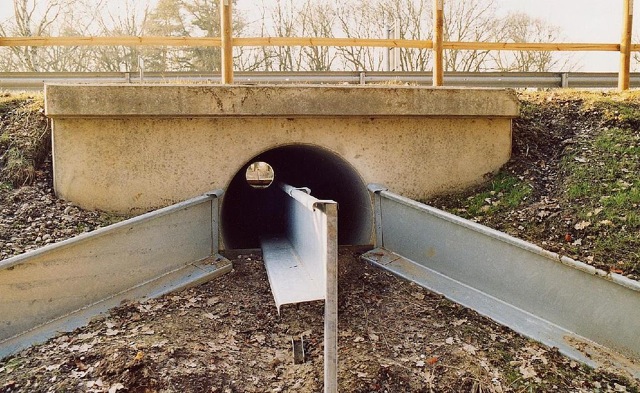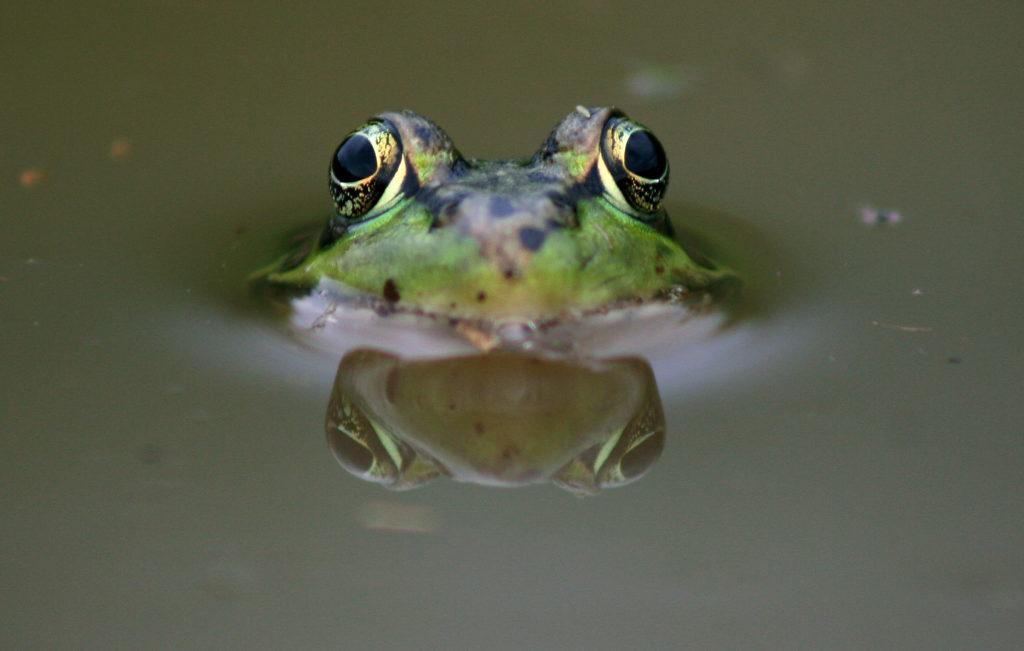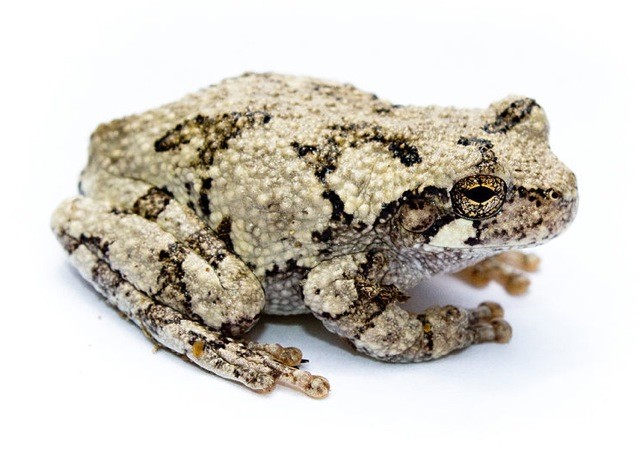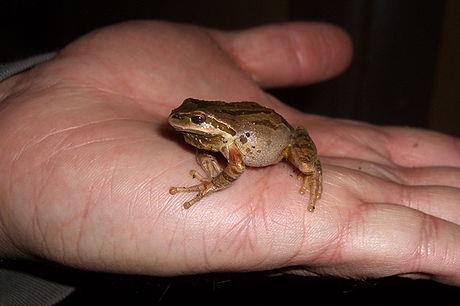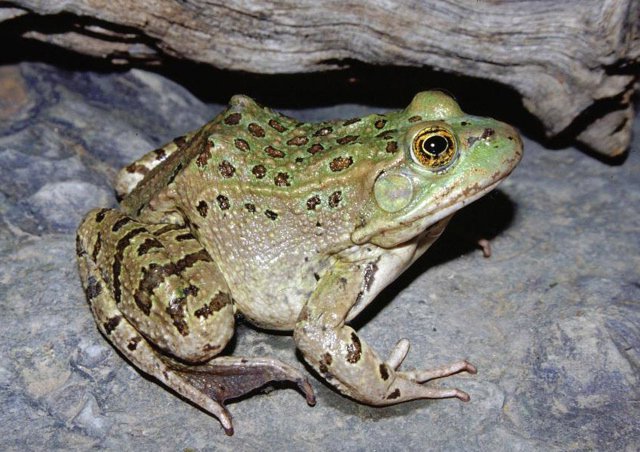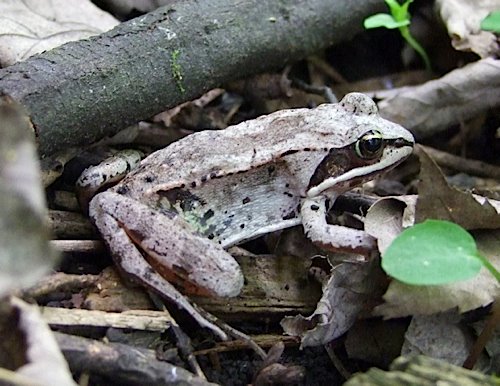Browse photos and interesting facts about frogs and toads, as adapted from our Facebook posts

Toad tunnel. (Christian Fischer / Wiki; cc by-sa 3.0)
Did you know that amphibians migrate? In the fall, frogs migrate down to the bottom of their breeding pond or stream. Salamanders go sometimes long distances from their breeding ponds to dry ground and burrow below the frost line. Newts migrate to wherever they can find protection from a hard freeze: rodent burrows, rubble heaps, compost piles, under fallen trees and logs. Toads migrate sometimes several miles from their summer breeding waters to higher, drier habitat and bury themselves. They often move in groups of hundreds or thousands.
Toad tunnels allow toads (as well as other critters) to safely cross from one side of a road to the other. Millions of toads are hit by cars every year. Naturalist John Serrao watched toads migrating one night across a road and counted 100 of them – 95 were hit by cars. Another time he counted more than 700 amphibians smashed on just 200 yards of road. This is one factor in the dramatic decline of amphibian populations.
 (Pdunant / Wiki)* |
| Watch a frog eating a mouthful of food and you’ll see that he blinks repeatedly as the food goes down. Blinking pulls their eyeballs down to the roof of their mouth, helping to push food into their throat. Their eyes are different in other ways, too. And, the lenses in their eyes focus by moving back and forth, like a camera lens. Humans and other mammals focus by the lens changing shape. |
| |
 Cope’s Gray Tree Frog. (Brian Gratwicke; Wiki; cc by 2.0) |
| Frogs’ eyes come in many colors, including brown, green, silver, bronze, gold, red. The eyes of COPE’S GRAY TREE FROGS (Hyla chrysoscelis) beautifully compliment the colors of their body, don’t you think? They’re indigenous to the southeastern U.S. |
| |
 American Green Tree Frog (Hyla cinerea). (e-Monk / EOL cc by 3.0) |
| It may seem weird to think of frogs in trees, but tree frogs spend most of their time there or in tall vegetation. They have long fingers and toes with disc-shaped tips that give them suction, thus superior grasping ability. In mating season, males make croak-like calls. Females lay eggs on a leaf above water. When tadpoles hatch, they fall into the water to develop into adults. Development time varies depending on the species. |
| |
 Eastern American Toad. (Bnski / Wiki; cc by-sa 3.0) |
| Does this EASTERN AMERICAN TOAD (Bufo americanus) have attitude or what? Some terrestrial frogs, including this one, are good diggers and hibernate deep in soil below the frost line. Their metabolism slows significantly. Diffusion of oxygen through their skin keeps them alive until spring. You may see them more often in fall as they look for places to hibernate. |
| |
 Pacific Tree Frog. (Marshal Hedin / EOL (cc by-sa 3.0) |
| PACIFIC TREE FROGS (Pseudacris regilla) are only 2 inches long. They’re the only frogs who actually make the “ribbit” call. The one shown here is only one variation of their colors. Most are green or brown, but others may be reddish, gray, cream or black, Found in wet areas, including backyards with ponds. They blend into their habitat, so they’re hard to spot. Listen to the 9-sec. and 4-sec. recordings at this link to hear “ribbit” call best. |
| |
 Vegas Valley Leopard Frog, now called the Chiricahua Leopard Frog. (Jim Rorabaugh, USFWS / Wiki; cc by 2.0) |
| The VEGAS VALLEY LEOPARD FROG, long thought to be extinct after developers drained their habitat in 1942 to build Las Vegas, has been found in Arizona as the species named CHIRICAHUA LEOPARD FROG (Rana chiricahuensis) DNA sampling has shown the two species to be identical. That’s the good news. The bad news is that the Chiricahua is a threatened species, the population rapidly falling. |
| |
 Wood Frog. (W-van / Wiki; cc by 3.0) |
| The NORTH AMERICAN WOOD FROG (Rana sylvatica) is a terrestrial frog. Like other wood frogs that aren’t good at digging, they creep into deep cracks and crevices in logs, rocks or under leaf litter. Why don’t they freeze? They do! Muscle movement stops. Their heart stops. Breathing stops. Ice crystals form. But, amazingly, a high glucose concentration in their body acts like anti-freeze — once they thaw, the organs re-ignite as though nothing had happened. |
All about frogs and toads |



